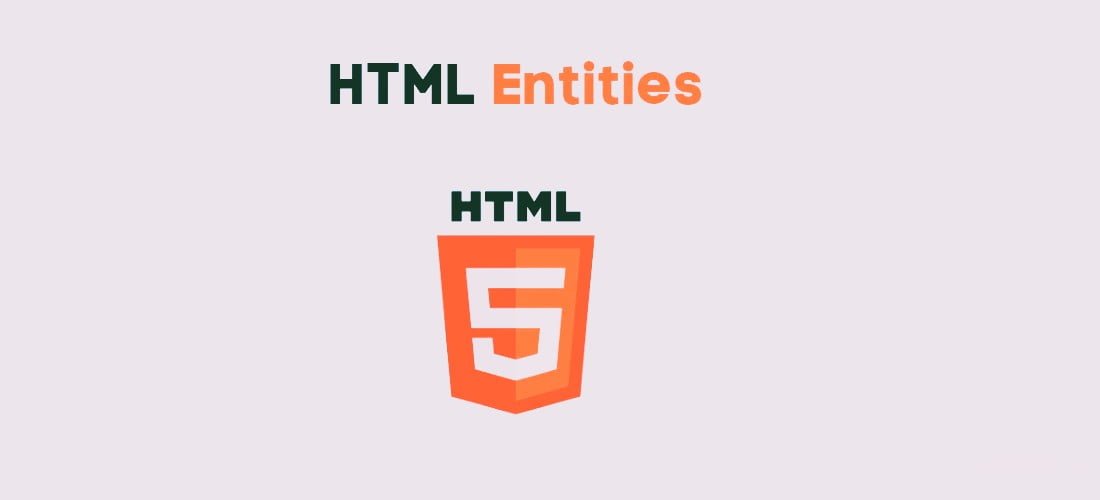HTML Tutorial
- HTML HOME
- HTML Introduction
- HTML Editors
- HTML Basics
- HTML Comments
- HTML Elements
- HTML Attributes
- HTML Headings
- HTML Paragraphs
- HTML Styles
- HTML Text Formatting
- HTML Quotations
- HTML Colors
- HTML Links
- HTML Images
- HTML Favicons: How to Add and Optimize for All Browsers
- HTML Page Title: How to Optimize Titles for SEO Success
- HTML Tables: Create & Optimize for Better Web Design | Codeezy
- HTML Lists: Types, Examples & SEO Tips for Better Structure
- HTML Block and Inline Elements
- HTML Iframes
- HTML File Paths
- HTML Layout
- HTML Computer Code Elements
- HTML Semantics
- HTML5 Semantics
- HTML Entities
- HTML Symbols
- HTML Emojis
- HTML Charsets
HTML Entities

HTML entities are special characters reserved in HTML that cannot be directly used in the content. Instead, they are represented by a specific code or entity name, allowing them to be displayed correctly in web browsers. This technique is essential for displaying symbols like <, >, &, and more, which would otherwise be interpreted as HTML tags or entities.
Why Use HTML Entities?
HTML entities are crucial for ensuring that special characters are correctly rendered on web pages. Without using these entities, certain characters could be misinterpreted by browsers, leading to errors in the display or functioning of the web page.
Common HTML Entities
Here are some common HTML entities that are widely used in web development:
- Less than (
<): Represented as< - Greater than (
>): Represented as> - Ampersand (
&): Represented as& - Double Quote (
"): Represented as" - Single Quote (
'): Represented as'
Example: Displaying Reserved Characters in HTML
In this example, we’ll demonstrate how to display HTML tags as text by using HTML entities:
<!DOCTYPE html>
<html>
<head>
<title>HTML Entities Example</title>
</head>
<body>
<p>To display the <strong><div></strong> tag, use the following HTML entity: <code>&lt;div&gt;</code></p>
<p>This will render as: <div></p>
</body>
</html>
Output:
- To display the
<div>tag, use the following HTML entity:<div> - This will render as:
<div>
Extended HTML Entities
Apart from the basic entities, HTML also supports many extended entities, including those for currency symbols, mathematical operators, and more.
- Currency symbols:
- Dollar (
$):$ - Euro (
€):€ - Pound (
£):£
- Dollar (
- Mathematical operators:
- Plus-Minus (
±):± - Division (
÷):÷ - Multiplication (
×):×
- Plus-Minus (
Example: Using Extended Entities
<!DOCTYPE html>
<html>
<head>
<title>Extended HTML Entities Example</title>
</head>
<body>
<p>Price: £100</p>
<p>Mathematical Operation: 10 ÷ 2 = 5</p>
</body>
</html>
Output:
- Price: £100
- Mathematical Operation: 10 ÷ 2 = 5
Best Practices for Using HTML Entities
- Consistency: Always use HTML entities for special characters, especially when working with dynamic content or user inputs.
- Readability: While HTML entities can make code harder to read, they are crucial for ensuring the correct display of content. Consider using comments to explain the usage in complex cases.
- Browser Compatibility: Use HTML entities to ensure compatibility across different browsers and platforms.
By understanding and correctly using HTML entities, you can enhance the reliability and display accuracy of your web content, ensuring that special characters are properly rendered across all user devices.
Thank You for Visiting Codeezy.org!
We’re thrilled to have you as part of our coding community. Your engagement and support inspire us to continue providing high-quality resources and tools to enhance your web development journey. Whether you’re a beginner or an experienced coder, we hope you found valuable insights and tools here at Codeezy.
Stay connected for more tips, tutorials, and updates to help you code with ease. Thank you for choosing Codeezy.org—your growth as a developer is our motivation!
Happy coding!
